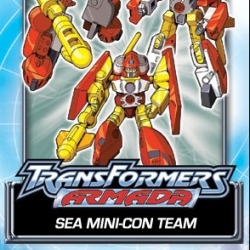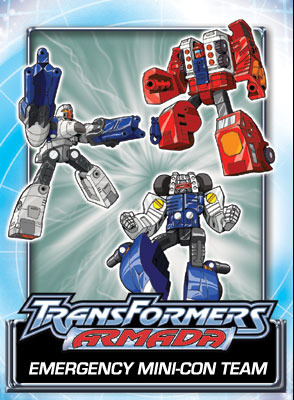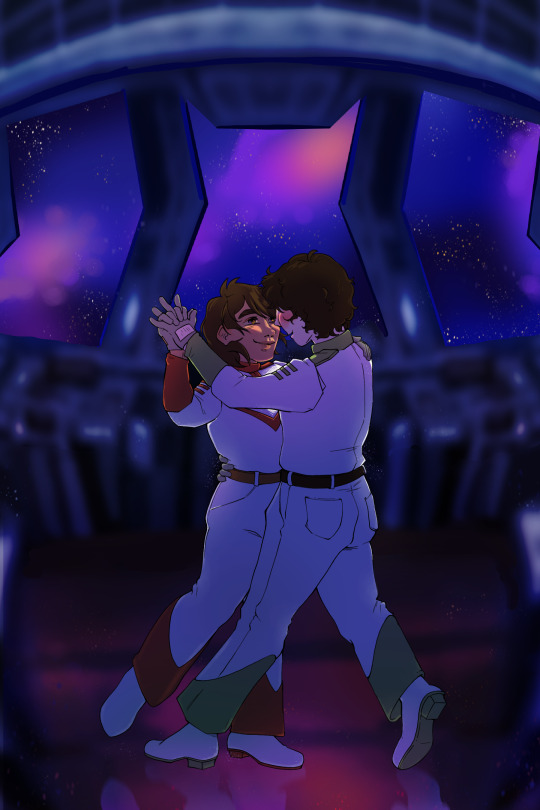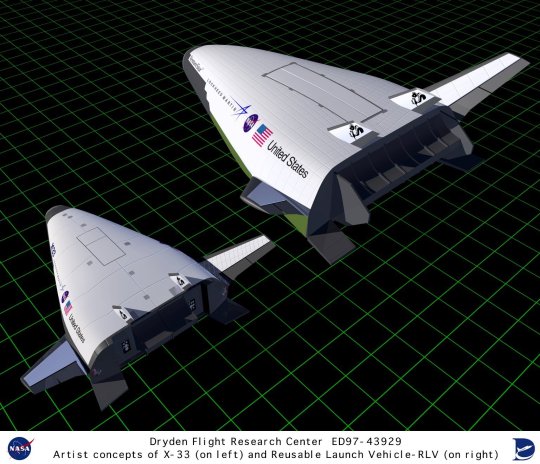#venturestar
Explore tagged Tumblr posts
Text



boom. pile of doodles!
#my art#art stuff#star blazers#mark venture#derek wildstar#kodai susumu#daisuke shima#venturestar#havent posted art in forever. whatevah. go my blorbos#space battleship yamato#these are from months apart hence the flippty flopping with the style#they're baaaaack. actually they're always there in my brain but their influence has gotten too powerful again.
16 notes
·
View notes
Text

I was reading your tags and I couldnt help but add





This man? Fruity? No way
right guys I asked folks over on Instagram but i know that most of the Yamato fandom is on here (there's like five of us in total but we're here)

17 notes
·
View notes
Text
The Modern Spacecraft, Part One
I know my blog title is history, but this is also relevant and interesting, so go with it.
Also note that, due to the wide variety of spacecraft types, I'll have to split this post into multiple parts. This one will focus on the ones people typically find the most interesting: crewed launch vehicles.
So, logically, different regions have different launch vehicles. I'll go over the main four today, those being the VentureStar, Skarmory, Ho-Oh Maru, and CORONET.
I'll start with the VentureStar, because that's the one I'm most familiar with. I actually rode one back in 2021 on the first leg of my journey to the Moon. Developed by URSA in the early 2000s as a more efficient and cost-effective replacement for the Space Shuttle, the VentureStar is a single-stage space plane that launches vertically and lands on a standard runway. Unlike the Space Shuttle, there are many of these, and som major Unovan airports expanded to include the launch infrastructure for them. As a result, the turnaround time from landing to next launch has been reduced to only a few hours.
The Galarian Skarmory is another single-stage space plane, but one that uses hybrid engines to reach space, meaning that it can take off like a normal plane as well as land like one. These became popular in the mid-2010s, but are already a staple of low orbit operations.
The Ho-Oh Maru, despite being named after a legendary pokemon from Johto, is actually built and operated by HAXA, the Hoennian space agency. This one isn't a plane, but more of an egg shape. It launches and lands vertically, and was introduced around the same time as the VentureStar was.
Lastly, the CORONET is the one I know the least about. They aren't nearly as common as the other vehicles in this list. It was developed in Sinnoh, and while it was initially proposed to launch in the early 2000s, cost overruns and development issues pushed it back to the early 2010s. Even now, they aren't always a welcome sight at low orbit shipyards due to the uncommon and proprietary hardware.
That's all for now, next time...idk, probably interplanetary ships, so stay tuned.
8 notes
·
View notes
Note
The Gotchard cast are on vacation to relax from being Riders but it appears Kaguya found them and is approaching them in his golden helicopter, the "Legend-copter", to ask for Houtaro's hand in marriage, again. Thankfully or not in Kaguya's case, two Mini-con teams have decided to stop him from doing any of this by attacking him.

The Sea Mini-con Team comprised of Oceanglide the "solar sail" boat, Stormcloud the speedboat, and Waterlog the hovercraft.

The Air Defense Mini-con Team comprised of Jetstorm the Concorde SST, Runway the Boeing Sonic Cruiser, and Sonar the VentureStar shuttle.
The Sea Mini-con Team starts to fire upon Kaguya's "Legend-copter" to either force Kaguya to land the helicopter or cause the helicopter to crash. The Air Defense Mini-con Team decide to board the helicopter and fight Kaguya by ripping one of the doors off and attempt to fight but they accidently send the helicopter to crash and Kaguya is able escape by parachuting away but the parachute is "accidently" ripped by Jetstorm while fleeing from the crashing helicopter. Which, leads to Kaguya landing in the water to drown, but he is thankfully saved by a Mini-con from a different team commanded by Houtaro to save Kaguya.

The Emergency Mini-con Team comprised of Firebot the crash-response truck, Makeshift the twin-rotor helicopter, and Prowl the Cybertronic police car.
Makeshift saves Kaguya from drowning and gets him on to land. Houtaro comforts Kaguya, who is slowly growing afraid of these machines, with the Emergency Mini-con Team, while the other members of the Gotchard cast scold the two other Mini-con teams for almost killing Kaguya.
What are the Riders' reactions to these sequence of events?

Emu: ...You couldn't have left him to die? *everyone gasps and looks at Emu* What? Are we going to act like those two aren't that guy's role models? *gestures to the Magenta Menace and the Yandere Cyan*
Shinnosuke: Uh... I think it's for the better if we never tell Houtaro about what you just said... and everything that just happened...
And so Houtaro remains oblivious, bless him, and Hojo Emu scares the fuck out of the mini-cons
#kamen rider legend vs kamen rider gotchard#houou kaguya quartz#ichinose houtaro#ask#lowder-the-koopa
3 notes
·
View notes
Text
God sometimes I really wish the VentureStar or CRV programs had gotten the funding and time they needed. I'd even settle for Kliper or HOPE or even Skylon; which we all know had a snowball's chance in hell of actually happening.
Out of all the possible crewed spacecraft for the ISS program to be stuck with why'd it have to be Crew Dragon, CST-100 and Soyuz MS.
1 note
·
View note
Text
Hi guys It's me I'm the mutual.

A Christmas gift for a mutual Ahhhhhhh !! Meant to post this on monday but time kept getting away from me~
closeups on my fav bits below

~

19 notes
·
View notes
Text


Horizon, in her fully complete configuration. Shown with Shuttle and Venturestar. Done by Jay.
As the Olympus program continued to hit its strides, it became clear that the premier international space outpost, Odyssey, had reached the end of its usable life. By the mid 2010s, she was approaching nearly 30 years old, having her first components launched in the late 1980s. While the modular assembly ability of the Space Shuttle had been proved useful in assembling Odyssey, it sat for nearly 4 years before crews could regularly access her and rotate through her, due to the lack of availability of lifeboat spacecraft. It was in this frame of mind that a new station concept would be considered, based on a concept called "Supermodule" from Ames, a giant, monolithic core leveraging the powerful Jupiter-OPAV system. She would be constructed using similar structures to that of the external tank, sharing the same 8.4 meter diameter, and augmented by 4.3 meter modules which could be launched onboard the Space Shuttle or Venturestar SSTO. On February 26th, 2014, OPAV Adventure would launch from Kennedy Space Center with the monolithic station core stacked on top, for a flawless 8 ½ minute ride to orbit. Here, she would be checked out by a variety of station crews, and only 3 assembly flights later, she was ready to support crew operations. Anna Douglass, commander of Olympus 3, would see her return to flight with Olympus 9 veteran Christopher Taylor - a heartwarming reunion and a symbol of strength in the face of adversity. Horizon would, after the retirement of the Shuttle, go on to be serviced by ACEV, Liberté and Venturestar, before the station was ultimately decommissioned in the late 2040s. Her replacements would be similar in form and function, forming a fleet of Horizon class stations served by both government operators and private corporations. Starlight, the first orbital tourism hub, would be based on the Horizon class, and grow into a popular tourist destination in the late 2030s. Horizon would pioneer the future of in space habitation, with future Interplanetary Transfer Vehicles incorporating lessons learned in habitat manufacturing and interior design.
#proxima: a human exploration of mars#alternate history#science fiction#worldbuilding#space#space shuttle#space station#station#venturestar#science#NASA
23 notes
·
View notes
Text

The X-33 was intended to serve as a half-scale prototype for Lockheed’s proposed VentureStar reusable launch vehicle. Though the final product of the program was to be a SSTO, the X-33 was merely a suborbital aircraft, intended to reach a top speed of Mach 15 and validate the general design. Powered by two experimental aerospike engines, the X-33 was to have a takeoff weight of 285,000lb of which 210,000lb would be fuel. Plans called for it to take off vertically and land horizontally like the Space Shuttle, but, being an SSTO, no external fuel tanks or boosters would be required. Unfortunately, the X-33 ran into a host of technical difficulties, including stability issues and excess weight, and, in 1999, the failure of the composite liquid hydrogen tanks during a full-scale test led to major cost overruns. Ultimately, funding was cut in 2001, with the prototype 85% assembled and launch facility completed. Meanwhile, a significant drop in the number of commercial satellite launches meant that the VentureStar would no longer be profitable, so Lockheed dropped the project soon after.
7 notes
·
View notes
Photo

VentureStar Inspired SSTO's (2363x1331 Credit: James Vaughan) via /r/spaceporn http://bit.ly/2TvYBSy
0 notes
Text
Well, to be fair, the Space Shuttle did break.
That was a pretty big thing.
If they had not cancelled it's replacement, the VentureStar, it would also be a steam engine.
nuclear power is impressive until you get up to why. "we use the most precisely engineered machinery ever created to split atoms to release energy" oh yeah how come? "boil water to turn a fan" get the fuck out
75K notes
·
View notes
Text
In those little moments where we can forget.

#my art#art stuff#three hours ago i said it was time for bed. hhhhh#star blazers#space battleship yamato#kodai susumu#derek wildstar#shima daisuke#mark venture#venturestar
10 notes
·
View notes
Text


Comparison between the enlarged VentureStar and the X-33.
"This artist's rendering depicts the NASA/Lockheed Martin X-33 technology demonstrator alongside the Venturestar, a Single-Stage-To-Orbit (SSTO) Reusable Launch Vehicle (RLV). The X-33, a half-scale prototype for the Venturestar, is scheduled to be flight tested in 1999. NASA's Dryden Flight Research Center, Edwards, California, plays a key role in the development and flight testing of the X-33. The RLV technology program is a cooperative agreement between NASA and industry. The goal of the RLV technology program is to enable signifigant reductions in the cost of access to space, and to promote the creation and delivery of new space services and other activities that will improve U.S. economic competitiveness. NASA Headquarter's Office of Space Access and Technology is overseeing the RLV program, which is being managed by the RLV Office at NASA's Marshall Space Flight Center, located in Huntsville, Alabama. The X-33 was a wedged-shaped subscale technology demonstrator prototype of a potential future Reusable Launch Vehicle (RLV) that Lockheed Martin had dubbed VentureStar. The company had hoped to develop VentureStar early this century. Through demonstration flight and ground research, NASA's X-33 program was to provide the information needed for industry representatives such as Lockheed Martin to decide whether to proceed with the development of a full-scale, commercial RLV program. A full-scale, single-stage-to-orbit RLV was to dramatically increase reliability and lower costs of putting a pound of payload into space, from the current figure of $10,000 to $1,000. Reducing the cost associated with transporting payloads in Low Earth Orbit (LEO) by using a commercial RLV was to create new opportunities for space access and significantly improve U.S. economic competitiveness in the world-wide launch marketplace. NASA expected to be a customer, not the operator, of the commercial RLV. The X-33 design was based on a lifting body shape with two revolutionary 'linear aerospike' rocket engines and a rugged metallic thermal protection system. The vehicle also had lightweight components and fuel tanks built to conform to the vehicle's outer shape. Time between X-33 flights was normally to have been seven days, but the program had hoped to demonstrate a two-day turnaround between flights during the flight-test phase of the program. The X-33 was to have been an unpiloted vehicle that took off vertically like a rocket and landed horizontally like an airplane. It was to have reached altitudes of up to 50 miles and high hypersonic speeds. The X-33 program was managed by the Marshall Space Flight Center and was to have been launched at a special launch site on Edwards Air Force Base. Due to technical problems with the liquid hydrogen tank, and the resulting cost increase and time delay, the X-33 program was cancelled in February 2001."
Date: September 23, 1999
source
NASA Identifier: NIX-ED97-43929, ED97-43938-1
#Lockheed Martin X-33#Lockheed Martin X-33 Venture Star#X-33#Venture Star#Reusable Launch Vehicle#RLV#lifting body#NASA#my post#September#1999
66 notes
·
View notes
Photo

VentureStar Inspired SSTO's (2363x1331 Credit: James Vaughan)
35 notes
·
View notes
Photo

VentureStar Inspired SSTO's (2363x1331 Credit: James Vaughan)
21 notes
·
View notes
Text
Interlude: Why am I Here Anyway?
So, some of you may be asking: "Hey PSH, why did you choose to work such a taxing job on the Moon when Earth is doing so well?" And that's a valid question.
It's a combination of factors, really. There's some personal stuff I don't really want to get into, sure, but that's only part of the story. Put simply, it's cause crazy shit keeps happening on Earth and I wanted out.
Obviously, there's a disturbingly high amount of potential world-ending events that I could point to, but there's a few that really pushed me over the edge. First, there was the Ryme City Attack in 2019, which, sure, wasn't exactly world-ending, but was definitely a major terrible event that happened. I was just out of college, working a pretty dead-end job as a store clerk for a Pokecenter outside of Mistralton at the time, and we saw live footage on TV of everything that had happened. Still sticks with me today, 'cause I remember hearing about the Mewtwo crisis of '99.
And not one year later, the fucking Darkest Day event happens in Galar, and everyone was on edge because yet another power-hungry individual had tried to screw with forces beyond their control. Real serious stuff. By that point, I was pretty fed up and itching to move, but shit like this happened everywhere. At least, everywhere in Earth.
So I found an offworld position at Devon Corp, aced the interview, and by June of '21 I had already caught the next VentureStar out of Mistralton.
(Plus, I had harbored a lifelong love of space which drove me to major in astroengineering, also a major part of why I left.)
Are there sometimes I regret leaving? Sure. But all things considered, I think I made the right choice.
0 notes
Text
Cuando la NASA quiso sustituir el Transbordador con un vehículo espacial barato y futurista: VentureStar https://www.xataka.com/espacio/cuando-nasa-quiso-sustituir-transbordador-vehiculo-espacial-barato-futurista-asi-era-venturestar
0 notes